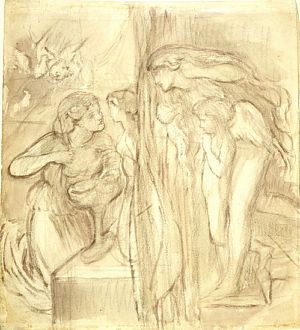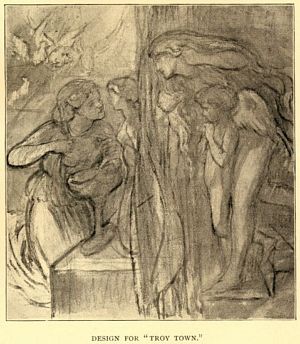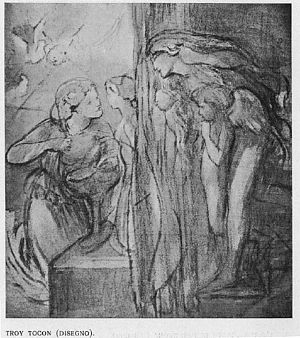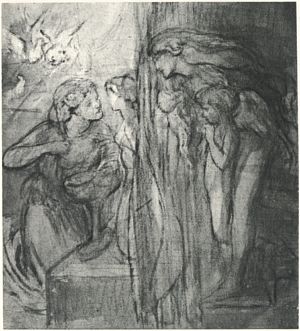
Description: Surtees identifies Helen as the figure kneeling at the left, facing the
altar of Venus, “ offering her a double cup moulded upon her own
breasts.” To the right, Venus and Cupid watch from behind a
curtain (Surtees,
A Catalogue Raisonné
, vol I, p. 123).
Copyright: Helen and Alice Colburn Fund. Courtesy, Museum of Fine Arts, Boston.
Reproduced with permission. ©2000 Museum of Fine Arts, Boston. All
Rights Reserved.



Scholarly Commentary
Introduction
Although Surtees says that the picture illustrates only lines 8-28 of Troy Town, in fact it comprehends the whole of the poetic conception. Unlike Dante at Verona , then, it represents a true “double work of art” even though the pictorial conception was never fully executed. In the latter respect it corresponds more closely to Eden Bower, which is only a sketch.
Production History
Robert Browning told Julia Wedgewood (2 September 1864) that DGR executed a drawing or painting depicting the design we now know as Troy Town. The present drawing, however, was made around 1870. Perhaps DGR had indeed done the picture Browning says that he saw; if so, it is now lost. (The 1863 painting Helen of Troy is almost certainly not the picture Browning refers to.)
DGR wanted to do a painting on this subject but it was never realized. Perhaps the drawing of the serpent-entwined woman was a study for this picture.
Literary
The drawing incorporates all of the narrative elements in DGR's poem Troy Town except the final two stanzas, where Paris is introduced. It relates most particularly to the first three stanzas.
Bibliography